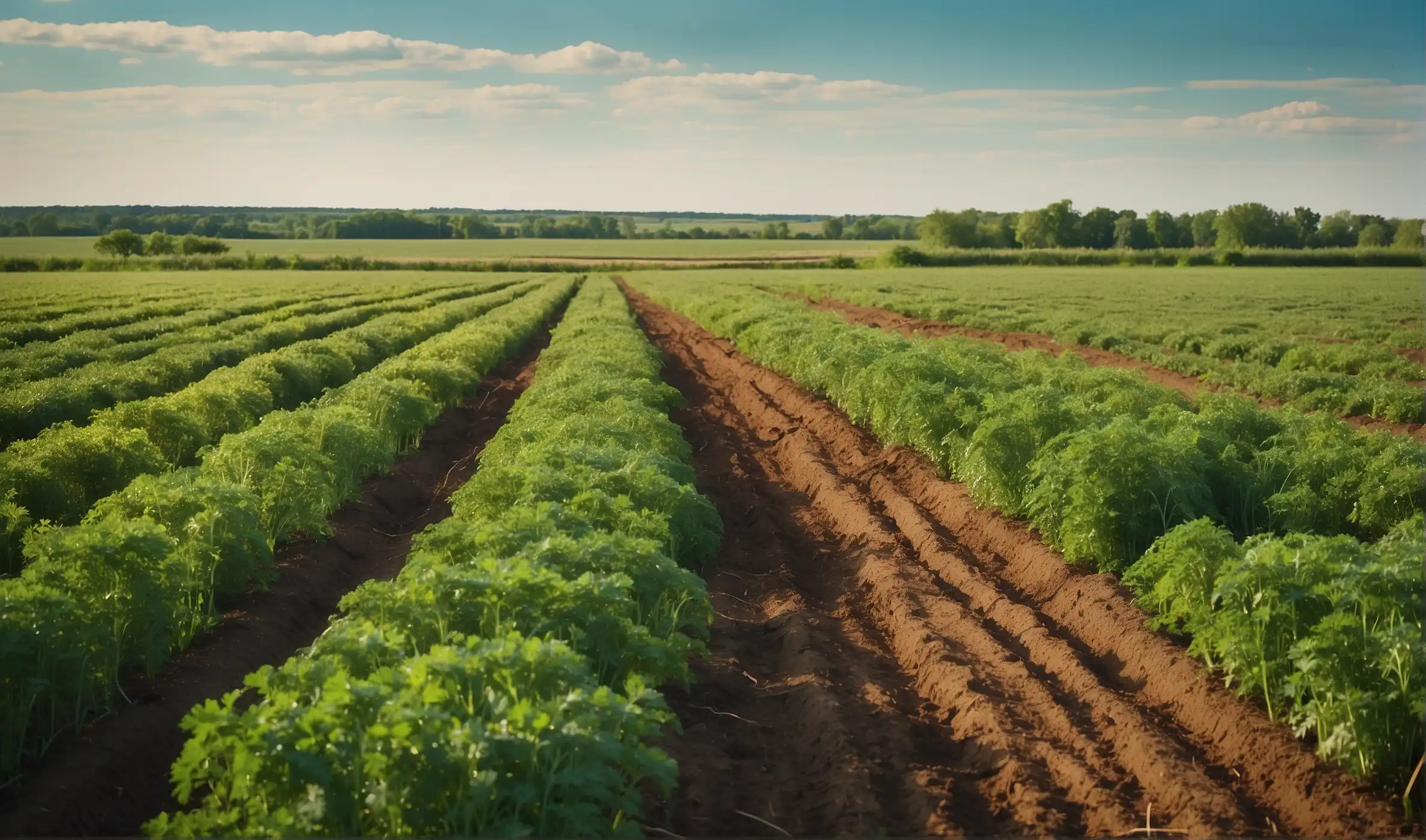Plant carrots in Minnesota from early April through late July. This timing allows for both spring and late summer harvests.
Embarking on a gardening journey in Minnesota’s diverse climate requires understanding the right timing for planting. Carrots, with their hardy nature, thrive when sown directly into cool, well-draining soil. Minnesota’s spring and late summer provide the ideal conditions for these root vegetables to develop.
Early planting ensures carrots mature before the peak summer heat, while a late summer sowing yields a late autumn harvest after the heat relents. By adhering to this schedule, gardeners can enjoy fresh, crisp carrots throughout the growing season. Whether you’re a seasoned gardener or a beginner with a new plot of land, planting carrots at the appropriate times maximizes yields and brings the sweet, earthy flavors of homegrown produce to your table.
Carrot Cultivation in Minnesota
An essential element of the Minnesota gardening calendar is carrot cultivation. These crunchy, nutritious vegetables are a staple in many kitchen gardens across the state. With a little knowledge about the local climate, the esteemed position carrots hold in our diet, and the best growing conditions, Minnesotans can enjoy a bountiful carrot harvest. Let’s delve into what it takes to successfully grow carrots in the Land of 10,000 Lakes.
Understanding the Climate of Minnesota
Minnesota’s climate comes with unique challenges for gardeners due to its cold winters and short growing season. Carrots, however, align perfectly with these conditions since they can tolerate frost and even improve in sweetness after a cold snap. Gardeners need to pay close attention to local frost dates, with the last frost typically occurring in late spring and the first frost arriving in early fall. Timing is everything: sowing carrot seeds too early or late might affect germination and growth negatively.
The Popularity and Nutritional Value of Carrots
Carrots are beloved not only for their versatility in the kitchen but also for their health benefits. Rich in beta-carotene, fiber, and vitamins, they are a key component of a balanced diet. Their popularity is a testament to their sweet flavor and crisp texture, whether consumed raw or cooked. This popularity ensures that they are a mainstay in local markets and encourages Minnesotans to grow their own.
Overview of Growing Conditions for Carrots
Ideal growing conditions for carrots in Minnesota hinge on well-drained soil and full sunlight. These root vegetables thrive in sandy or loamy soils that are free from stones or heavy clays that can cause misshapen roots. The optimal pH range for carrots is between 6.0 and 6.8. Regular watering ensures steady growth of the carrot roots, but be mindful to avoid waterlogging the soil, which can lead to root diseases.
Successive planting will yield a continuous harvest throughout the growing season. Aim to plant the first round of carrot seeds 3-4 weeks before the last expected spring frost. Since Minnesota can experience a first frost as early as September in some areas, plan your final planting to allow enough time for carrots to mature before the growing season ends.

Determining the Best Planting Time
For green thumbs in Minnesota, timing is everything when it comes to planting carrots. These root vegetables thrive under specific conditions, and pinpointing the perfect window for sowing seeds can lead to a bountiful harvest. Understanding the local climate’s nuances is key, so let’s dive into the factors that determine the best planting time for carrots in the Land of 10,000 Lakes.
The Role of Frost Dates in Planting
Frost dates are crucial in determining when to plant carrots in Minnesota. These dates refer to the average timeframes when the last spring frost and the first fall frost occur. Carrots require a cool start, making them ideal for early spring planting. The goal is to plant them after the risk of hard frost has passed but while the soil retains some coolness.
| Region | Last Spring Frost | First Fall Frost |
|---|---|---|
| Northern Minnesota | Mid to late May | Early September |
| Southern Minnesota | Late April to early May | Mid to late September |
Soil Temperature and Its Impact on Germination
Soil temperature plays a pivotal role in the germination of carrot seeds. For successful germination, soil temperatures should ideally be between 45 to 85 degrees Fahrenheit. Cooler temperatures can lead to slow germination, while higher temperatures may inhibit it altogether. Utilizing a simple soil thermometer can help ensure you’re planting at the optimal time.
- Aim for a steady soil temperature above 45°F
- Check temperatures at a depth of 1-2 inches
- Consistently warm soil increases germination success
Minnesota’s Growing Season Explained
In Minnesota, the growing season can vary significantly from the north to the south. In general, the growing season starts later and ends earlier as you move north. Carrots, being a hardy vegetable, are well-suited to Minnesota’s shorter growing seasons, especially since they can tolerate light frosts. Starting seeds indoors is not recommended for carrots due to their sensitive taproots, so direct sowing outdoors within the right timeframe is key. Keep a close eye on local weather forecasts to time your planting for optimal growth.
- Start planting carrots 2 to 3 weeks before the last spring frost date.
- Consider successive plantings every 2 to 3 weeks for a continuous harvest.
- Use mulch to keep the soil moist and the temperatures regulated as summer approaches.
Know more: How Long Can Baby Carrots Sit Out
Guidelines for Planting Carrots in Minnesota
Growing carrots in the diverse climate of the North Star State can be a rewarding experience, whether you’re a gardening enthusiast or someone simply trying to add some homegrown crunch to your meals. To ensure a bountiful harvest, timing and technique are key. This section will delve into guidelines specifically tailored for Minnesota’s growing conditions.
Steps for Planning Carrot Planting Dates
Minnesota’s climate dictates a relatively short growing season, making it crucial to plan your planting dates wisely. Carrots thrive in cooler temperatures, and the soil temperature should ideally be around 45°F to 65°F.
Follow these steps to plan the perfect planting dates for your carrots:
- Check the frost dates: Begin by determining the average last spring frost date and the first fall frost date in your area.
- Count backwards: Carrots typically require about 70 to 80 days to mature. Plan to plant your seeds 3 to 5 weeks before the last frost date, ensuring they have adequate time to grow.
- Consider succession planting: To extend the harvest, consider planting carrot seeds every 2 to 3 weeks until mid-summer.
Tips for Preparing Soil for Carrot Seeds
Preparing the soil is a critical step in growing healthy, robust carrots. Proper soil conditions can lead to a superior crop that is easy to harvest.
- Loose, well-draining soil: Carrots prefer a sandy loam that allows for root expansion. Compact soil can lead to stunted or forked carrots.
- Ensure a neutral pH: The ideal soil pH for carrots is between 6.0 and 6.8. Test your soil and adjust accordingly.
- Raise the beds: Raised beds can help improve drainage and make it easier to create the ideal soil conditions.
- Clear the ground: Remove any rocks, clumps, or debris that might impede root growth.
- Enrich the soil: Work in a good amount of organic compost to provide the necessary nutrients for your carrots.
Proper Techniques for Sowing Carrot Seeds
Sowing carrot seeds directly into the garden will yield the best results. With their delicate roots, carrots do not transplant well, making it important to get the sowing process right.
Apply these techniques for best results:
- Create shallow furrows: Make straight rows about ¼ inch deep, with 12 to 18 inches between the rows.
- Space the seeds: Carrot seeds are tiny, so mix them with sand for even distribution, sowing them about 2 to 3 inches apart.
- Cover lightly: Gently sprinkle soil over the seeds, ensuring they’re just covered. Carrots need light to germinate, so don’t bury them too deep.
- Maintain moisture: Keep the soil consistently moist until the seeds germinate, which can take 1 to 3 weeks.
- Thin the seedlings: Once the carrots sprout, thin them to about 1 to 2 inches apart to prevent crowding and promote proper growth.
Care and Maintenance Throughout the Growing Season
Embarking on the journey of growing carrots in Minnesota requires a gardener to be attentive to care and maintenance throughout the growing season. From ensuring proper irrigation to implementing measures against pests and diseases, each step is crucial for a bountiful harvest. Below, we’ll dive into the specifics of watering, fertilizing, pest control, and harvesting carrots in the Land of 10,000 Lakes.
Watering and Fertilizing Your Carrot Crop
A consistent watering schedule is key to carrot development. Carrots prefer moist, well-drained soil. Aim for about one inch of water per week, either from rainfall or supplemental irrigation. Using a soaker hose can help provide a steady supply of water directly to the roots with minimal wastage.
Fertilization should be done with care, as excessive nitrogen can lead to forked roots. A low-nitrogen, high-potassium fertilizer applied at the time of planting provides the necessary nutrients for root growth. After 5-6 weeks, consider a side dressing to continue supporting your growing carrots.
Pest Control and Disease Prevention for Healthy Growth
Protecting your carrot crop from pests and diseases is essential. Common threats such as carrot rust flies and root-knot nematodes can be mitigated by crop rotation and using floating row covers. For diseases like leaf blight, maintain proper plant spacing and practice sanitation by removing debris from the garden.
- Inspect leaves regularly for signs of infestation.
- Implement biological controls like beneficial nematodes for natural pest management.
- Avoid overhead watering which can encourage fungal diseases.
When and How to Harvest Carrots in Minnesota
In Minnesota, carrot harvest typically begins in late summer and can continue until the ground freezes. Carrots reach maturity at around 70 to 80 days after planting, but you can begin harvesting baby carrots even earlier.
To harvest, gently loosen the soil around the carrot and pull out by the foliage. Timing is everything; if carrots become too large, their core can become woody. After harvest, store carrots in a cool, humid place to maintain crispness and sweetness for longer periods.
Conclusion
As the brisk Minnesotan air gives way to gentler days, timing is everything for carrot planting. Aim for after the last frost, yet well before summer’s peak—the sweet spot where soil and sun collaborate. Embrace these guidelines, and your garden will be a haven for thriving carrots teeming with vibrant color and crisp freshness.
Stay rooted in the latest carrot trends and tips. Keep connected with Farm Pioneer and our Carrots section for insightful and informative articles. Happy gardening!
